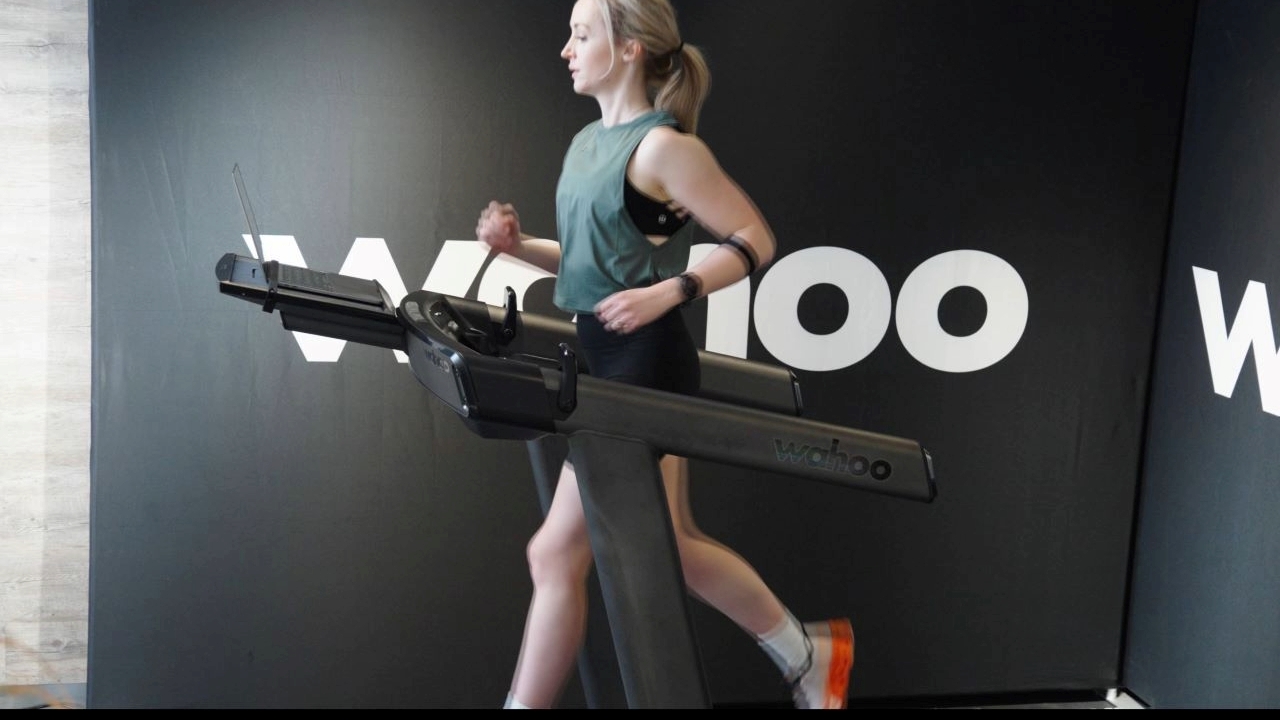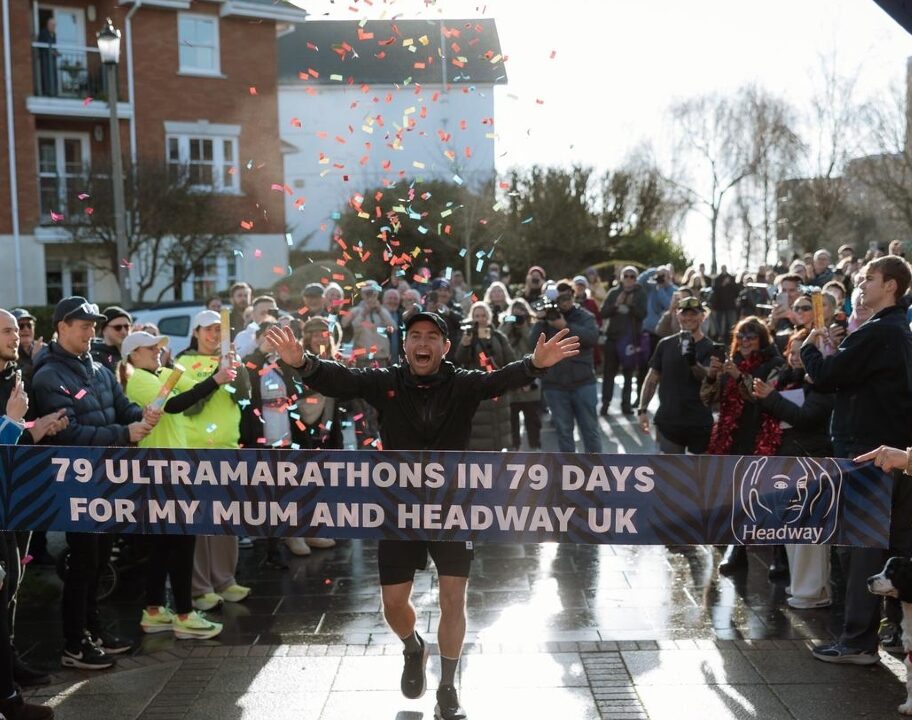Many runners get lured into taking on their first marathon by the challenge of finding out whether or not they can cover the 26.2 mile distance on two feet. And for plenty, just completing a marathon is enough to tick the box and move on. Enjoying a life no longer dominated by Sunday long runs and an unhealthy obsession with the cheapest stockist of blister plasters within a 20 mile radius.
But for others, that first marathon finisher medal hanging around their neck is just the beginning. ‘One and done’ turns into ‘maybe just one more’. A sub-4 hour finish. And then it’d be rude not to shoot for sub 3.30. And at that stage, you’d be mad not to task yourself with an elusive sub-3hr finish time – or going all out in the pursuit of your six stars Marathon Majors medal. Sound like a familiar train of thought? Keep reading!
If you’re looking to get faster over the marathon distance, it’s time to step things up a notch and start layering speed on top of endurance. Simply going the distance won’t be enough to hit your goals. We take a look at why speed work is still important for long distance runners. And how to incorporate different forms of interval training into your marathon training regime, to get you one step closer to hitting your marathon running goals.
Why is speed work important for marathon training?
If you want to run faster, for longer – you’ve just got to run further and faster in all your training runs, right? Wrong. It can be tempting to go for a pure volume play, upping your weekly mileage until you go through running shoes faster than coffee filters. But in reality, you can see significant improvements to your marathon pace by maintaining a similar overall weekly run volume. Instead using your training miles wisely to incorporate some of the shorter, faster stuff alongside the steady endurance miles. The variety in your training will also help to keep things interesting, which can help with your consistency.
Working on top end speed makes your steady pace quicker
It might seem counterproductive to incorporate short, fast intervals into your training schedule. How is being able to run fast for 3 or 4 minutes going to translate to marathon pace? The key thing to understand is that interval training and speed work is a really effective way to stimulate the correct energy systems that will enable your body to become more efficient at utilising oxygen, oxidising fat as a fuel source and improving the amount of time at intensity you can tolerate before performance-dropping fatigue sets in.
You can read more about the science behind run training in our guide to training zones and our running VO2 max explainer. But in essence, interval training and incorporating short blasts at your top end speed is going to turbo charge your run fitness. Which in turn means your marathon/endurance pace will get faster, for the same amount of effort.
Short blasts of faster running helps to build better run form
We’ve all been there. The end of another long, slow, endurance run when it’s starting to feel like a slog and you’re too busy dreaming about the peanut butter toast you’re going to demolish the second you get home to think about your run form. Your hips drop, your shoulders round, your stride length turns into a shuffle and your arm carriage is giving T-Rex.

It can be easy to lose run form when you’re focusing predominantly on the long, slow stuff. Which can not only increase injury risk, but also makes you a less efficient runner. But when you’re blasting through speed work, you’ll naturally run with better form. Driving your knees forward, powering through your stride and using your arms to help keep forward momentum. Running fast as part of your overall training schedule will help you to maintain the feel of running with good form, and carry that efficiency into your long runs.
Takes you beyond your comfort zone to build mental toughness
If you want to PR your next marathon, you’re going to have to embrace getting out of your comfort zone. It doesn’t matter how hard and smart your train – running faster over the marathon distance means at some stage, it’s going to get really hard to keep pushing.
That means your mental game needs to be as strong as your run fitness. Speed work doesn’t just make you a stronger, faster runner physically. It also helps you to build up that mental toughness and resilience which is vital for marathon runners. The sessions might challenge you, and you might even find yourself doubting whether you can do them at all. But every run workout you tick off will help you to build confidence in your abilities and the resilience you need to be able to tap into to keep pushing the pace in the latter stages of your marathon.
Tempo sessions in particular are a useful tool to get your body and your mind used to running at your target race pace – without overloading yourself in training trying to maintain that pace during every long run. Speed work fills your ‘mental filing cabinet’ with evidence that you can push through hard moments and you can hit tough paces. So when you start to doubt yourself around the 20 mile mark on race day, you can remind yourself: ‘yes, I can.’
Best workouts for marathon training – how to incorporate speed work into your marathon training regimen
So that’s why you should still incorporate speed work into your training, even if you’re focusing on the marathon distance. But what sort of sessions should you be doing, and when? Below we’ll dive into the different types of speed work to consider, along with some example workouts. Use our training zones guide to work out what intensity you should be working at to execute these workouts at the appropriate level for your current fitness.
Lactate tolerance work
In the early phases of training (typically around >12 weeks out from your race) when you’re just starting to bring speed work into the mix. It’s good to opt for workouts with mid-length intervals at your 10km pace. Once you’ve set the groundwork, you can then also include threshold intervals at or just above your 5km pace. This will help your body and mind to build tolerance to intensity and get better at clearing lactate to facilitate the longer tempo runs and the higher intensity interval sessions as your training progresses. If you’ve taken a chunk of time off running and you’re starting more or less from scratch, it’s worth completing a few weeks of pure steady runs to get back into the swing of things and build some base fitness first. But if your base is already there, you should be good to jump right in.
SWEETSPOT: 3 X 10 MINS @ 10km RACE pace
3 x 10 minutes is a good run workout to set the ground work for longer, sustained tempo efforts later in your training. Working at zone 4 intensity will help to raise your lactate threshold by pushing it up from below – essentially meaning you can run faster for longer before the burning sensation of fatigue kicks in and slows you down.
WARM UP: 10 MINS EASY JOG BUILDING UP TO STEADY PACE
MAIN SET: 3 X 10 MINUTES @ 10KM RACE PACE (Z4: 90-95% THRESHOLD PACE/85% MAX HEART RATE/7/10 EFFORT)
5 MINUTES EASY* BETWEEN EACH REP
COOL DOWN: 5 MINUTES, GRADUALLY REDUCING PACE DOWN TO A WALK FOR THE LAST 1-2 MINUTES
*At first, depending on fitness, you may need to walk during the rest periods to recover enough between the repeats.
This workout will have you completing a total of 30 minutes of effort within the session. If that’s too much to start off with, you can adapt the session by reducing the efforts down to 7-8 minutes, and walking during the rest intervals as required.
threshold: 5 X 3 MINS @ 5km RACE pace
Once you’ve set the ground work with the 10km pace efforts, you can step up to faster 5km efforts. Now you’ll be aiming to work in Zone 5, just above your second lactate threshold – pulling it up from above. The shorter recovery periods will encourage your body to get better at clearing lactate efficiently so you can recover faster, ready to go again. Over time, this will significantly improve your lactate threshold.
WARM UP: 10 MINS EASY JOG BUILDING UP TO STEADY PACE
MAIN SET: 5 X 3 MINUTES @ 5KM RACE PACE (Z5: 95-105% THRESHOLD PACE/85-95% MAX HEART RATE/8/10 EFFORT)
2 MINUTES steady cruise* BETWEEN EACH REP
COOL DOWN: 10 MINUTES, GRADUALLY REDUCING PACE DOWN TO A WALK FOR THE LAST 1-2 MINUTES
*If required, reduce this to easy jogging pace or walk for 1 minute, jog for 1 minute
You’ve only got a total of 15 minutes at effort pace in this workout, so focus on being really precise with your pacing so you can hit the same pace in the final rep as the speed you start at. Resist the temptation to go too hard on the first couple of reps – it’ll pinch later on!
Tempo runs
Many runners read ‘tempo run’ and assume that means a gnarly workout where you’re going as hard as you can. In reality, tempo runs are about getting in some quality time at your target race pace. In the context of marathon training, going too hard on your tempo runs will just put unnecessary fatigue into your legs which means you haven’t got the capacity to complete the real spicy sessions with enough intensity. For marathon runners, tempo is about edging slightly out of your comfort zone and boosting your ability to run faster for longer by getting used to your target race pace.
30 MINUTES TEMPO
This is a session you can start incorporating fairly soon into your marathon training. It’s ideal to use as a second mid-week run workout to go alongside one slightly more intense interval workout. Consider having an easier day or even cross training with a swim or a bike between your interval workout day and your tempo run day.
WARM UP: 5 MINS Easy / 5 x 20s drills (strides/side steps/heel flicks) / 5 mins easy to steady progressive pace
MAIN SET: 30 minutes tempo (Z4: 90-95% THRESHOLD PACE/85% MAX HEART RATE/7/10 EFFORT)
COOL DOWN: 10 MINUTES, GRADUALLY REDUCING PACE DOWN TO A WALK FOR THE LAST 1-2 MINUTES
LONG RUN WITH TEMPO EFFORTS
Once you get deeper into your marathon training and you’ve built up a really solid base of fitness, you can start to incorporate pace work into some of your long runs – typically every other week. This will help you to adapt to running at your target race pace – and build your confidence that you’re capable of holding it – without the risk of overload and burn out that could come with doing your full long run mileage at race pace.
EXAMPLE MARATHON LONG RUN WITH TEMPO EFFORTS (25KM RUN)
5KM STEADY – ZONE 2 (max 75% threshold pace/70% max heart rate)
10km @ marathon pace – ZONE 3 (75-90% THRESHOLD PACE/70-80% MAX HEART RATE)
5km steady
You can adapt the session if you’re running for time instead of distance. For example if the run is 2.5 hours complete: 40 minutes steady / 75 minutes @ race pace / 35 minutes steady.
As the mileage ramps up, you might want to consider splitting the race pace work into two intervals to incorporate some recovery and avoid overreaching. For example in a 32km long run, start with 7km steady followed by 2 x 8km at marathon race pace with 1km steady in between, followed by 7km steady.
Hill repeats
You might not be training for a hilly marathon, but it’s still worth including hill repeats into your training. Not only will this help you to build strength that will help you to maintain a strong pace through the latter stages of your marathon. Running up hills also helps to promote better run form – we naturally tend to run as efficiently as possible when we’re trying to power up a hill.
shorter hill repeats
Ideal if your target marathon is fairly flat and you’re looking to use hill work to build strength and power. Find a hill with around a 5% gradient that you can run up for around 2-3 minutes. It’s important the hill you use isn’t too steep so you can work at the right intensity and keep good form. Consider using a treadmill if you don’t have any suitable hills near you.
WARM UP: 20 minutes progressive pace easy to steady
MAIN SET: 5 X 2 MINUTES hill repeats as hard up, easy down (8/10 effort)
COOL DOWN: 15 MINUTES steady to easy

UP AND OVERS
If your target race does have a solid amount of elevation, this slight variation on hill repeats will help you to not only build strength to get up the hills – but also the ability to hold pace as you crest the hill. Start with a slightly easier gradient – around 3% so you can push up and over the top of the hill before taking recovery.
WARM UP: 20 minutes progressive pace easy to steady
MAIN SET: 5 X 3 MINUTES hill repeats – 2 minutes to the top, 1 minute maintain the effort as the hill flattens out. Easy jog down recovery (7/10 effort)
COOL DOWN: 15 MINUTES steady to easy
Race prep: progressive pace runs
When it comes to being able to achieve what you’ve trained for on marathon race day, pacing is your secret weapon. So many of us get this wrong – getting swept up in the nerves and adrenaline of the start line and setting off way too fast. It feels great to start with. Easy even. And you kid yourself that you can totally hold this (way faster than you’ve trained for) pace all the way to the finish line. Then it starts to feel kind of hard. And things get worse from there, until the next thing you know you’re stumbling along the edge of the race course frantically grabbing whatever sugar-laden sustenance you can find at an aid station and questioning all of the choices that led you to this moment.
EXAMPLE PROGRESSIVE PACE RUN
WARM UP: 10 minutes steady with drills/activations
MAIN SET: 10km progressive. start in z2 and increase the pace every 1km, aim to hit marathon race pace at 8km and hold it for the final 2kms
COOL DOWN: 5 MINUTES steady to easy
Progressive pace workouts in the latter stages of your marathon training will help you to practice keeping your pace under control. Holding back at the start, and pushing through fatigue at the end so you can execute your race day pace plan to perfection. These don’t need to be particularly long sessions, it’s just about training yourself to being able to keep a handle on your effort.
Incorporating a mixture of intervals, pace work and hill repeats alongside your steady endurance runs will help you to take your marathon training to the next level. Balance recovery with effort and prioritise fuelling your training (and recovery) properly, and you’ll set yourself up for your best marathon yet.
Take a look at our deep dive into the average, good and exceptional marathon times for age-groupers to get inspired or set a goal!






